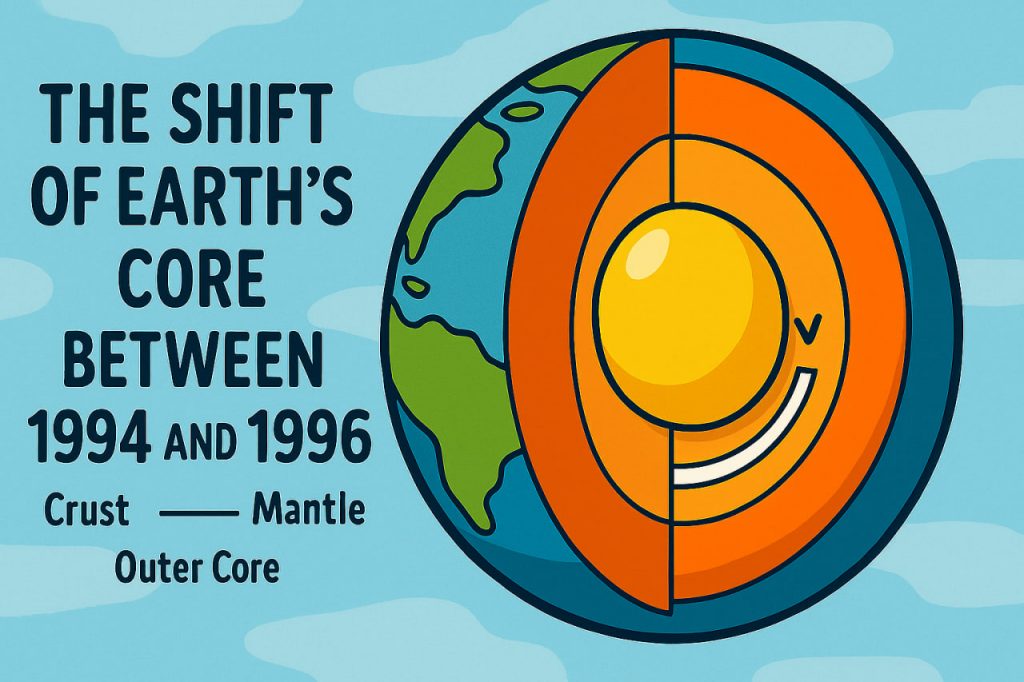Between 1994 and 1996, a subtle but intriguing event occurred deep inside our planet — a possible change in the rotation rate of Earth’s inner core. This phenomenon, observed through careful analysis of seismic waves, has raised important questions about the interaction between Earth’s core, mantle, and magnetic field. While not visible on the surface, such changes may influence long-term geophysical processes.
What Is the Earth’s Inner Core?
The inner core is a solid ball of mostly iron and nickel located at the center of the Earth. It is surrounded by the liquid outer core, which generates the planet’s magnetic field through its swirling, molten motion. Unlike the surface, the inner core is believed to rotate at a slightly different speed than the rest of the planet — a phenomenon known as differential rotation.
Evidence of the Core Shift
During the mid-1990s, scientists noticed subtle differences in how seismic waves passed through the Earth when comparing data from repeated earthquakes. These tiny changes suggested that the inner core’s rotation speed relative to the Earth’s surface had altered. Specifically, some researchers proposed that the inner core slowed down or even briefly reversed direction around 1994–1996.
Why Did It Happen?
The cause of this possible shift is still under investigation. One theory suggests that changes in mantle convection — the slow movement of rock in the mantle — altered the torque acting on the core. Another hypothesis is that fluctuations in the geomagnetic field might have changed the balance of forces acting within the fluid outer core, which could affect the rotation of the inner core.
Global Impact and Surface Effects
Despite media speculation, no direct link has been proven between inner core shifts and major surface events such as earthquakes or climate anomalies. These movements are incredibly slow and subtle, operating over decades or even centuries. However, understanding them is vital for explaining the Earth’s magnetic field dynamics and planetary evolution.
Scientific Debate and Current Research
Not all geophysicists agree that the core changed its direction or speed during that period. Some suggest the variations in seismic readings may result from structural changes in the core rather than rotation. Ongoing studies use advanced seismic tomography and satellite-based geomagnetic observations to track core behavior with higher precision.
Glossary
- Inner core – the solid, iron-rich center of the Earth
- Outer core – the liquid layer surrounding the inner core
- Seismic waves – vibrations that travel through the Earth, used to study internal structures
- Differential rotation – when one part of a planet rotates at a different speed than another
- Mantle convection – slow, heat-driven flow of solid rock within Earth’s mantle
- Torque – a force that causes rotation
- Geomagnetic field – Earth’s magnetic field, generated by motion in the outer core
- Seismic tomography – a method for creating 3D models of Earth’s interior using seismic data


